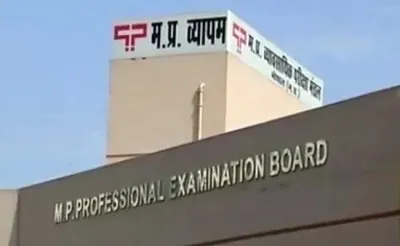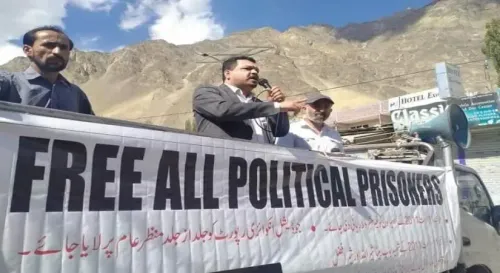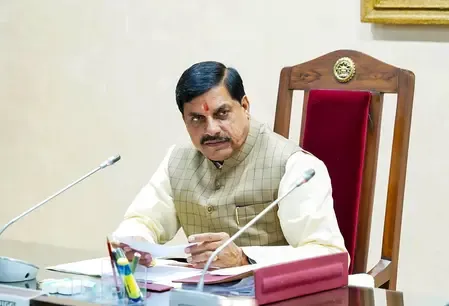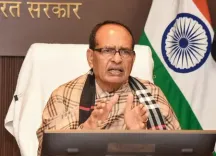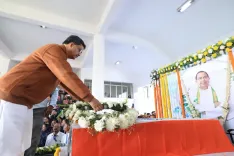What is Behind the Widespread Rainfall in Gujarat?
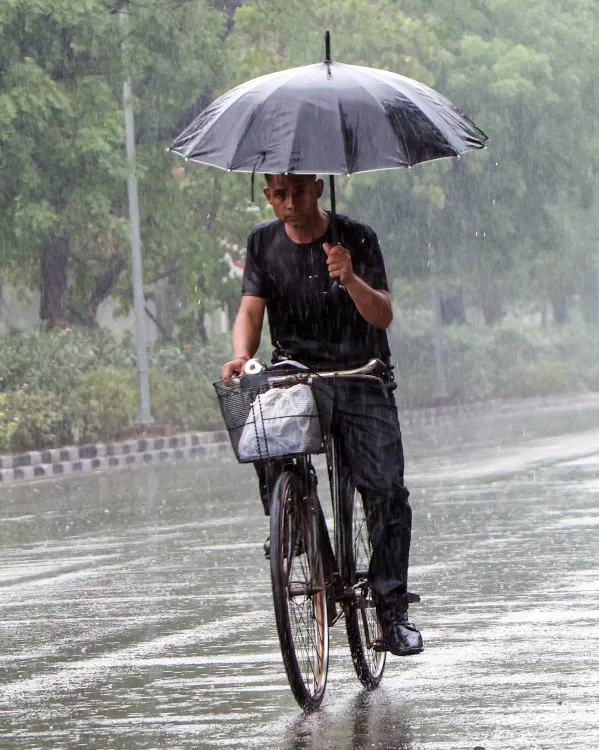
Synopsis
Key Takeaways
- Borsad recorded the highest rainfall at 99 mm.
- Gujarat has received nearly 47 percent of its average monsoon rainfall.
- Significant rainfall expected throughout July.
- Government response includes emergency measures and road repairs.
- Control rooms activated for continuous monitoring.
Ahmedabad, July 8 (NationPress) The state of Gujarat has experienced significant rainfall across 153 talukas within the past 24 hours, with only 12 talukas receiving more than one inch of rain. The heaviest precipitation was observed in Borsad, located in central Gujarat, which recorded an impressive 99 mm of rainfall, as reported by officials on Tuesday. Following closely was Godhra with 95 mm, while Gandhidham and Mandvi (Kutch) reported 58 mm and 57 mm respectively. Other notable locations included Khambhalia with 49 mm and Bhachau with 48 mm.
According to the India Meteorological Department (IMD), more rainfall is anticipated for various regions across the state. As of the morning of July 8, Gujarat has received nearly 47 percent of the average monsoon rainfall, based on a 10-year seasonal benchmark. The monsoon season has kicked off robustly, with the state tallying approximately 266-324 mm of rain since June 1, which constitutes about 37-40 percent of its seasonal average.
This follows an earlier report highlighting an exceptionally wet June, with cumulative rainfall surpassing the long-term average for all of India by nearly 11 percent. Rainfall distribution has varied significantly: South Gujarat has seen over 23 inches (almost double the norm), Central-East around 12 inches, Saurashtra approximately 245 mm, and Kutch about 142 mm. Daily statistics reveal that by July 8, nearly 47 percent of the expected rainfall from June to September across the state had already fallen.
The IMD forecasts indicate that July's rainfall will exceed 106 percent of the long-term average for Gujarat, with expectations of more widespread and sometimes heavy to very heavy downpours through mid-month.
In response to the above-average rainfall, the Gujarat government has intensified its monsoon readiness.
Chief Minister Bhupendra Patel has instructed officials to execute immediate road repairs, especially in areas prone to flooding, treating the situation with utmost urgency.
The State Emergency Operation Centre (SEOC) is actively monitoring rainfall and reservoir levels, while disaster response teams, including NDRF and SDRF units, are deployed in at-risk districts.
Control rooms have been established for round-the-clock operation, and district administrations have been tasked with ensuring rapid drainage in low-lying areas, providing temporary shelters, and coordinating with health and power sectors to avert service interruptions.


